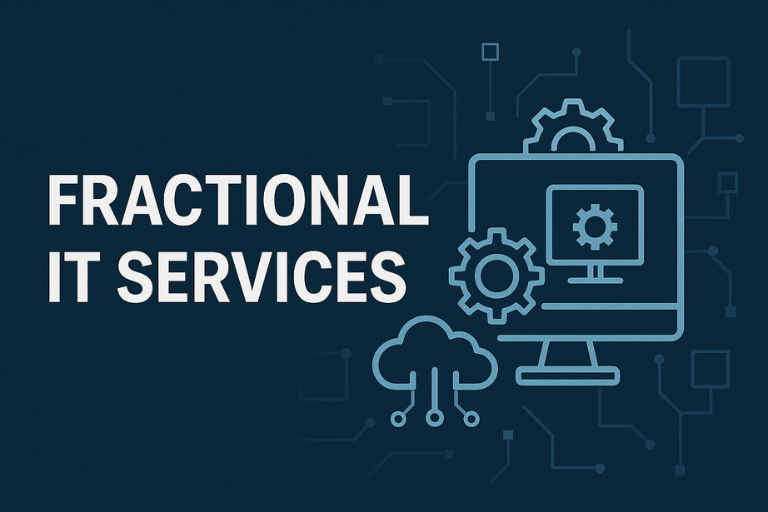Moving offices can be quite exciting, especially when scaling up, but it could easily become hectic and stressful if not well coordinated. Professional IT office relocation services can help make this transition smooth and efficient.
Unlike moving homes, office relocation involves more than just moving physical things; you need to guarantee that your data flows uninterrupted and systems remain secure—your whole IT infrastructure needs to be handled with care to avoid disruptions. This is where specialized IT relocation expertise becomes crucial.
How will you manage the transfer of sensitive information? How will your IT team handle potential disruptions? How will you manage IT equipment relocation safely and securely?
Tapping into expert IT guidance helps you answer these questions and navigate the waters smoothly. It also ensures you maintain productivity before, during, and after your relocation.
Let’s explore how you can avoid common pitfalls to guarantee a seamless shift for your business.
Assessing Current IT Infrastructure
Understanding your existing setup is essential for identifying what’s working well and what isn’t. Working with experienced IT infrastructure management specialists who understand IT office moves and wiring can help thoroughly assess your current systems and identify opportunities for improvement during the transition. You need to know the details of your current technology landscape to make sure nothing critical gets overlooked in the change. Evaluating the existing setup will let you identify what’s working well and what isn’t. This assessment should cover everything from hardware and software systems to data storage solutions and network configurations that your business relies on daily.
When you’re aware of the age, capacity, and performance of your current systems, you can make informed decisions about upgrades or replacements. Maybe you’ve outgrown your old servers, or perhaps your backup systems aren’t as reliable as you need them to be. Professional office relocation wiring services can help ensure your new setup meets all your current and future needs. Recognizing these factors early prevents costly downtime and compatibility issues during the relocation.
Additionally, evaluating your IT infrastructure helps you allocate resources more effectively. It’ll help you discover what needs to be packed with extra care, what can be easily transported, and what might require special handling procedures. This step isn’t just a precaution; it’s a strategic approach to safeguard your operational continuity. You don’t want to find yourself in your new office only to realize your critical data didn’t make it through the move unscathed.
Planning the IT Office Relocation Strategy
“…fail to plan, plan to fail.” You need to develop a comprehensive strategy for your office relocation. Create a detailed timeline that considers all critical milestones from the initial move to the final setup in the new location.
Here are a few things to consider when planning the relocation:
- Identifying important components: Which of your IT setups are most essential to your daily operations? Prioritize their relocation to minimize downtime.
- Map out the logistics: You need to decide how your hardware will be safely transported. Are your servers rack-mounted? Do you need special packaging or climate-controlled transport? Make sure you’ve got a clear plan for every piece of equipment.
- Review new office layout: Where will your IT infrastructure fit best? You’ll need to plan for adequate power supply and cooling systems, ensuring they’re ready before the move begins. You should also double-check the network cabling in advance; figure out the length and type of cables required and where they’ll run in the new space.
- Prepare your staff: Your employees should know what to expect and how they can help. This might involve training them on temporary changes or disruptions. Keeping everyone informed will help reduce stress and confusion during the move.
Pre-Move IT Checklist
Use this comprehensive checklist to ensure you’ve covered all critical IT aspects before your office relocation.
Infrastructure Assessment
- ☐ Create inventory of all IT equipment and their current locations
- ☐ Document network configurations and IP addresses
- ☐ Review and document software licenses
- ☐ Measure current bandwidth usage
- ☐ Check age and condition of equipment
- ☐ Identify equipment that needs replacement or upgrades
New Location Planning
- ☐ Review new office floor plans
- ☐ Verify power supply requirements and outlet locations
- ☐ Check server room specifications (space, cooling, security)
- ☐ Map out network points and cable routing
- ☐ Plan workstation layout and connectivity needs
- ☐ Assess Wi-Fi coverage requirements
Vendor Coordination
- ☐ Schedule internet service installation
- ☐ Book IT moving specialists
- ☐ Arrange phone system transfer
- ☐ Coordinate timing with all vendors
- ☐ Get quotes for any new equipment needed
Data Protection
- ☐ Perform full system backup
- ☐ Test backup restoration
- ☐ Document critical system settings
- ☐ Create emergency contacts list
- ☐ Export important configurations
Equipment Preparation
- ☐ Label all equipment and cables
- ☐ Take photos of current setup
- ☐ Secure appropriate packing materials
- ☐ Create shutdown sequence document
- ☐ Pack non-essential equipment
Customize this checklist based on your office size and IT infrastructure complexity. Share it with your team to ensure nothing is overlooked during the move preparation.
Coordination With IT Vendors
When do you want to move? How long should it take? What time will you start? What are the most important? It’s important to establish clear, open lines of communication early on to make sure they understand the logistics and timing of your office move. Begin by scheduling a meeting to discuss the overall timeline and any specific requirements or challenges related to your IT infrastructure. Make sure each vendor knows their role and the exact expectations you have of them.
Once timelines are sorted, you need to provide detailed information about the new office layout. This includes floor plans and network setup requirements so that all hardware and services can be appropriately planned for. What goes to what floor? Discuss access times for installations and any restrictions that might affect their work.
It’s also vital to designate a point of contact within your organization who’ll handle vendor queries and coordinate efforts. This liaison will streamline communications, reducing the likelihood of misunderstandings or delays.
Lastly, make sure you’re on the same page regarding the budget. Clear cost expectations will help avoid surprises and ensure the relocation proceeds smoothly. Keep regular tabs on progress and schedule follow-up meetings to address issues as they arise.
Pre-Move IT Testing
Testing your systems is an important step that will help mitigate potential IT issues before they arise. Working with experts who specialize in IT setup for new office environments can help ensure all systems are properly configured and tested. This will help avoid conflicts or blame games between your employees or with the vendors post-relocation. This typically involves network performance evaluation and system backup protocols.
Network Performance Evaluation
Assessing your network’s performance before relocating guarantees that IT systems will operate efficiently in the new office space. To guarantee a seamless shift, you must thoroughly test and assess the network capabilities.
Here are key factors you should focus on:
- Bandwidth needs: Determine if the current bandwidth meets the future demands of your office.
- Latency issues: Identify potential delays in data transmission.
- Connectivity tests: Confirm all critical areas in the new location have network access.
- Load testing: Simulate typical and peak usage to check network response.
- Wireless coverage: Verify the strength and range of Wi-Fi signals across different sections of the new office.
Addressing these areas will help you avoid unexpected downtime and productivity losses post-relocation.
System Backup Protocols
After guaranteeing your network’s performance is up to par, it’s vital to establish robust system backup protocols before you move. Identify all critical data across your company’s network, and make sure every piece of data is accounted for and backed up in multiple secure locations. This isn’t just about copying files; it’s about creating a thorough backup strategy that includes regular snapshots and off-site storage solutions to safeguard against data loss during transit.
You should also test these backups regularly before the move. Try restoring data from the backup to check for integrity and completeness. This step ensures you move your office and protect your business against potential data disasters.
Managing IT During the Move
During the relocation, you’ll need to guarantee that your IT infrastructure is systematically dismantled, transported, and reassembled with minimal downtime. This process can be complex, but with the right strategies, you’ll navigate through it smoothly.
Here are some essential steps:
- Pre-move planning: Schedule a detailed planning session with your IT team. Map out every step of the IT relocation process, from the initial packing of equipment to the eventual reassembly. This plan should align with your overall moving schedule to make certain that all pieces fit together seamlessly.
- Inventory management: Keep a detailed inventory of all IT assets. This includes serial numbers, condition reports, and a verification checklist to use both before and after the move.
- Professional handling: Use professional movers who specialize in handling IT equipment. They’ll have the necessary tools and knowledge to safely transport sensitive technology.
- Communication setup: Establish a temporary communication system that can operate during the move. This ensures you stay connected with your team and clients throughout the relocation.
- Data protection: Ensure all data is backed up and secure during transport. Utilize encryption and other security measures to protect sensitive information from potential risks during the move.
Following these steps will help you manage your IT effectively and ensure your cybersecurity measures are intact, avoiding potential pitfalls and downtime.
Post-Move IT Configuration
Once your office move is complete, focus on setting up your IT systems to guarantee they’re fully operational.
- Hardware verification: Make sure all your hardware—servers, computers, printers, and other peripherals—are properly connected and configured. It’s important to check that the physical setup aligns with your network design to prevent connectivity issues.
- Network configuration: This includes setting up routers and switches and ensuring your Wi-Fi network covers the entire office space without any dead zones. You’ll also need to assign static IP addresses to critical hardware and services to maintain network consistency.
- Reinstallation: Don’t forget to reinstall and configure your software systems. This means deploying your operating systems, office software, and any specialized applications you use. Ensure all software is updated to the latest versions to benefit from improved security and functionality.
- Backup systems: Double-check that your data recovery processes are in place and functioning correctly. This safeguards your data against unforeseen issues post-relocation.
Ongoing IT Support and Adjustment
After you’ve settled into your new office space, the real work begins with ongoing IT support and adjustments.
You’ll need to keep a close eye on system monitoring to catch any potential issues early. Addressing common problems quickly will guarantee that your team maintains high productivity without significant downtime.
Post-Move System Monitoring
To ensure your system’s performance remains excellent after relocating your office, you require ongoing IT support and adjustments. You’ll need to monitor and fine-tune your IT systems to guarantee they meet the new operational demands. This phase isn’t just about fixing issues as they arise; it’s about proactive improvement and optimization to prevent potential problems down the line.
Here are some key actions you should consider:
- Regularly review system performance and load capacity.
- Update security protocols to align with new network configurations.
- Conduct periodic audits of IT infrastructure.
- Adjust user access settings as team dynamics evolve.
- Implement feedback mechanisms to identify areas needing improvement.
Troubleshooting Common Issues
As you settle into your new office, some things might need getting used to, so you’ll likely encounter some common IT issues that require prompt and effective troubleshooting.
Network connectivity might be your first hurdle; make sure all cables are correctly connected and routers are properly configured. You might also face challenges with printer setups or email configurations. So, double-check IP addresses and DNS settings, as these often get overlooked in the chaos of a move.
If software isn’t behaving as expected, verify that all systems are updated to their latest versions. Remember, compatibility can be an issue, especially if hardware has been updated or replaced. Don’t hesitate to contact your IT support team for help. They’re there to assist you in smoothing out these initial bumps.
Conclusion
As you embark on your office relocation, the role of specialized IT expertise can’t be overstated. By meticulously evaluating your existing IT infrastructure and planning your move with precision, you significantly reduce potential risks and pave the way for a seamless transition. Remember, the success of your move heavily relies on strategic foresight and effective coordination with experienced vendors.
At Network Right, we understand the complexities involved in office relocations. Our comprehensive IT office relocation services ensure a smooth transition for your business. We have a team of experts in Professional IT services, IT support, and vCISO services are well-equipped to guide you through this crucial process. We’ve engaged in a comprehensive pre-move assessment and implemented robust testing phases to safeguard operational continuity. Furthermore, our post-move ongoing support ensures that your business maintains its efficiency and is well-positioned for future growth.
Contact us to get started. Let’s discuss how our localized expertise and strategic IT solutions can contribute significantly to the success of your office relocation.


